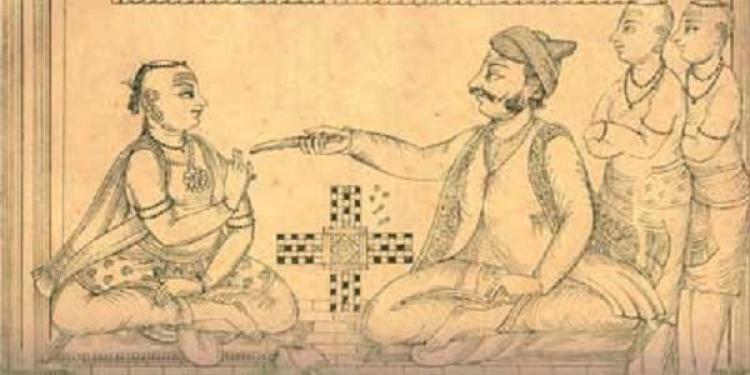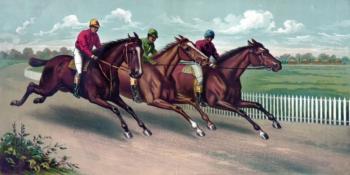Who is the Biggest Gambler in India’s History? Murkha Nayanar.
Posted: January 10, 2015
Updated: January 10, 2015

As hard as the authorities try to pretend otherwise, gambling holds a big place in the hearts and minds of Indians. Here’s an ancient example.
India is not a gambling-friendly country by any means. The federal prohibition on gambling has been on the books since the heyday of the British Raj; the Public Gambling Act of 1867 made it illegal to operate a gambling house anywhere in India, and that law remained in force with only minor amendments.
Murkha is a Hindu saint and gambling legend
He would feed devotees of Shaivism using gambling winnings
Murkha is nicknamed the “wicked Nayanar” and “violent Nayanar”
These days, casinos operate legally in the coastal city of Goa and the Himalayan state of Sikkim. Internet gambling in India is banned completely, as is betting on sports. That doesn’t mean that Indians don’t gambling, however.
Underground card rooms and betting shops can be easily found in any major city. Online casinos in India operate in defiance of the law. Upper-middle class Indians travel to Goa, Macau, and Singapore to play blackjack and baccarat.
While Indians don’t get the same publicity as their gambling-mad neighbors in China, gambling has deeper roots in the country than most people realize.
Lawmakers could use a history lesson
Indian gambling laws show a puritanical streak, with leaders seeing it as immoral and generally harmful for the country’s social and economic development. One of India’s most beloved saints, however, saw things differently.
That is a reference to Murkha Nayanar, one of the 63 “hounds of Shiva” who devoted their lives to worship of Shiva during the 6th through 8th centuries. Adhering to a branch of Hinduism called “Shaivism,” the Nayanars were wandering holy men, poets, even manual laborers.
Murkha is the most memorable of the Nayanars, because of the peculiarity of his profession. He showed his devotion to Shiva through gambling. Born in Tiruverkadu, Tondai Nadu—at the time part of the Pallava Kingdom and now a suburb on the western edge of Chennai—Murkha was part of the Vellalar caste of landowners.
After having an epiphany, Murkha sold his land, possessions, and slaves and spent the proceeds feeding the other devotees to Shiva. Once that money ran out, he turned to gambling to provide for his flock.
Murkha the wily gambling strategist
Murkha’s desire to serve Shiva led him to travel across South India, visiting gambling houses in every town he passed along the way. He famously visited the city of Tirukkudanthai (present-day Kumbakonam), home of many shrines to Shiva, to pay homage to the Hindu deity.
It is written in Periya Puranam, the 12th century hagiography of the 63 Nayanars, that Murkha visited gambling houses in order to win money to feed Tirukkudanthai’s devotees. The story goes that he had the ultimate big night at the gambling tables, winning enough money to pay for a gigantic feast. Always a gentleman, Murkha waited for all of Shiva’s devotees to finish eating before sitting down to his meal:
For the purpose of feeding the devotees
Of the blue-throated Lord and to gain therefor
The wherewithal, in famous Kudanthai’s gaming houses,
He threw the rolling dice and came by money;
He deemed all the lucre to be the Lord’s own grace,
Fed His devotees and felt happy
Because Murkha was a traveler, he was a stranger in many of the places he visited. He used this to his advantage, strategically losing in initial rounds, luring opponents into betting large sums of money. Only then would he allow his brilliance to shine.
Murkha’s legacy is not just a nice one, however. Remembered as the “wicked Nayanar,” the wandering ascetic would stab opponents who refused to pay gambling debts. Here is a passage from the Puranam:
He would lose in the initial play and make his rival
Gain money; but in all subsequent play
He would repeatedly win and come by great money;
He would stab them with his sword that tried to cheat
Him with deceptious words; thus he, the good gambler,
Came to be known as Moorkkar in this fourfold world.
Murkha’s legend lives on
Gambling is illegal in the Indian state of Tamil Nadu, but Murkha is remembered fondly. He is worshipped by Hindus during the Tami month of Karthikai, and icons and written accounts of his deeds are found in temples across Tamil Nadu.
Tamil Nadu is also one of India’s gambling centers, despite it being illegal there. Cards rooms specializing in Rummy and Teen Patti proliferate, as do cock fighting rings with elaborate betting systems. Cock fighting violates both gambling and animal cruelty laws.
The anecdote of Murkha Nayanar shows something that anti-gambling politicians and activists know but won’t admit. Gambling is a basic human pastime that has existed for hundreds, in some cases thousands, of years. Even in India, a country not famed for its gambling culture, a beloved saint lived the life of a wandering card shark.
Politicians can ban the activity and arrest gambling house operators and patrons all they want. But they’ll never succeed in eradicating the activity. There is something very human about gambling, and that’s a lesson that anti-gambling crusaders could stand to learn.












